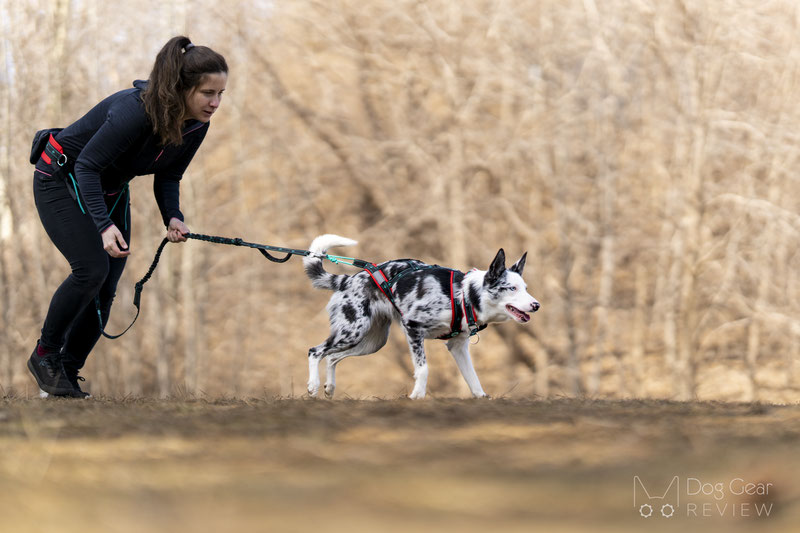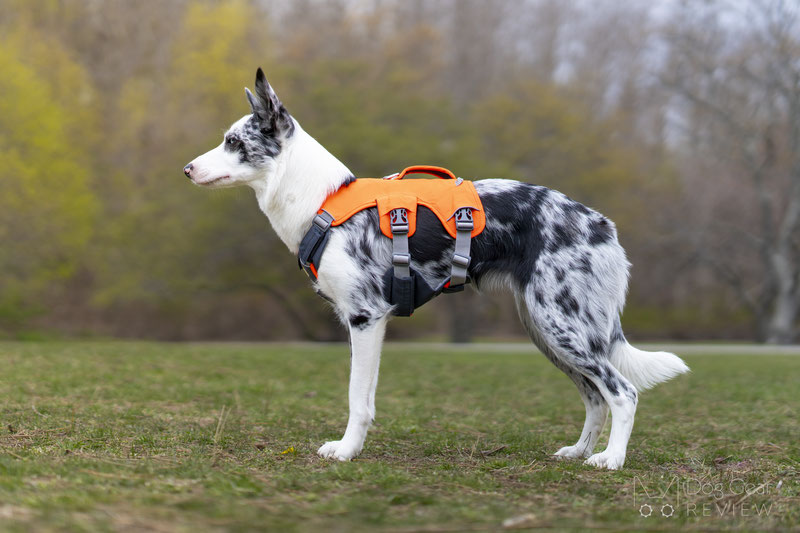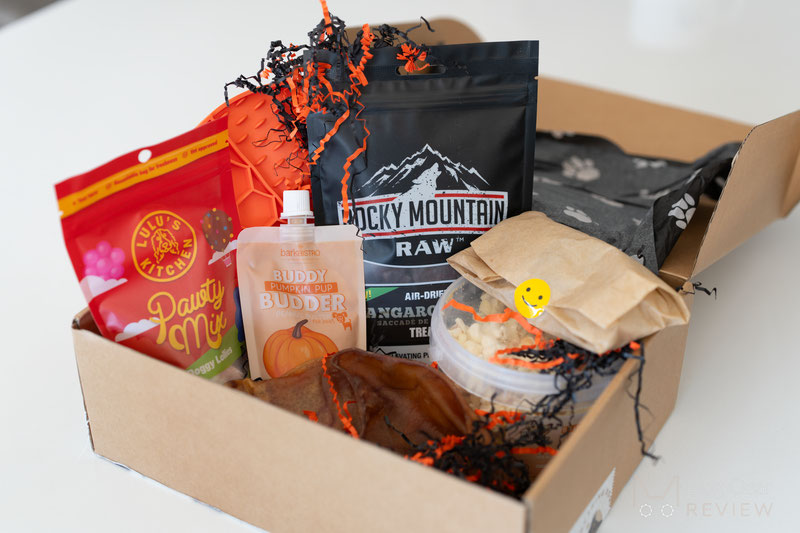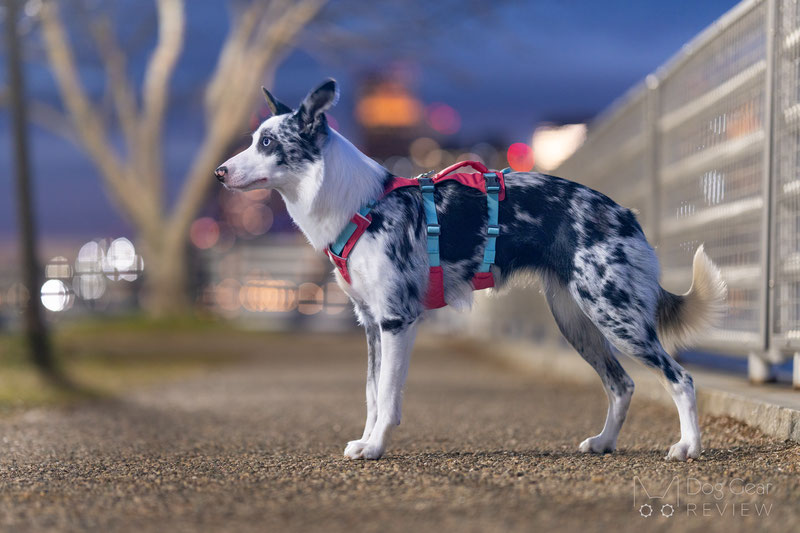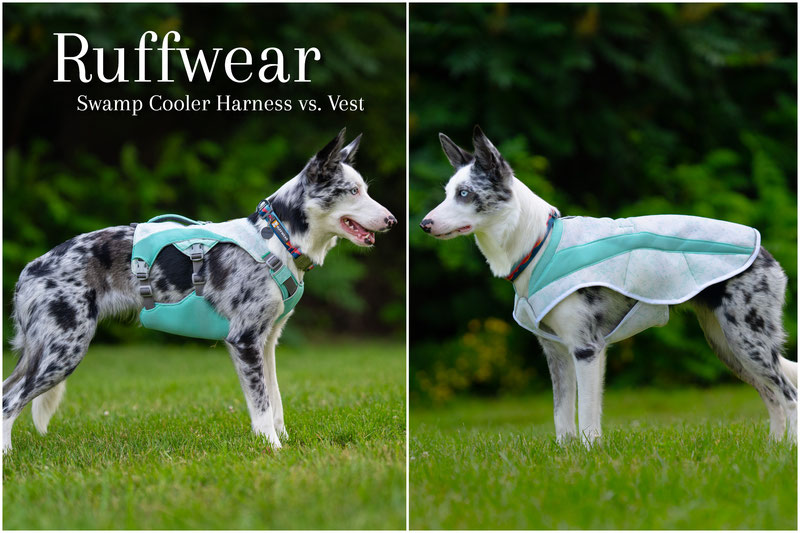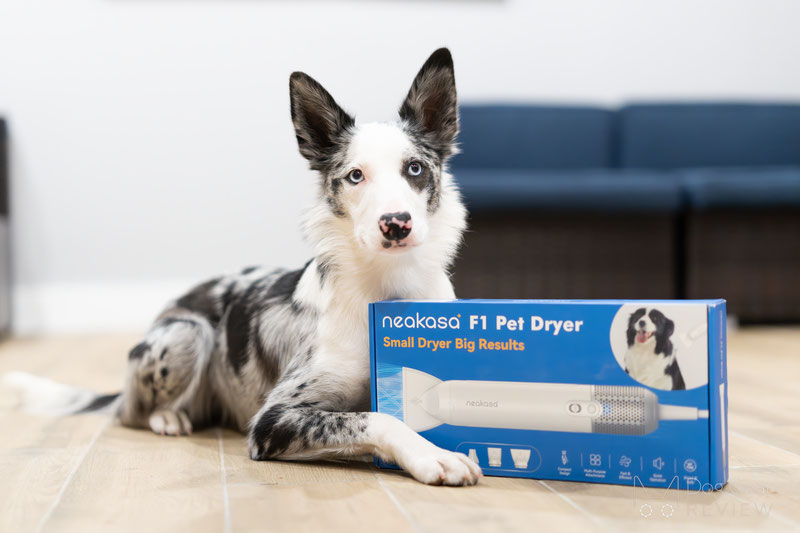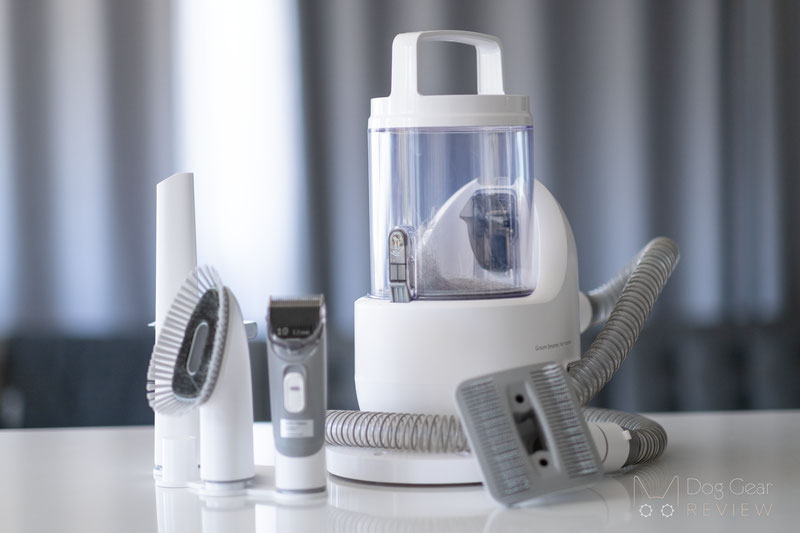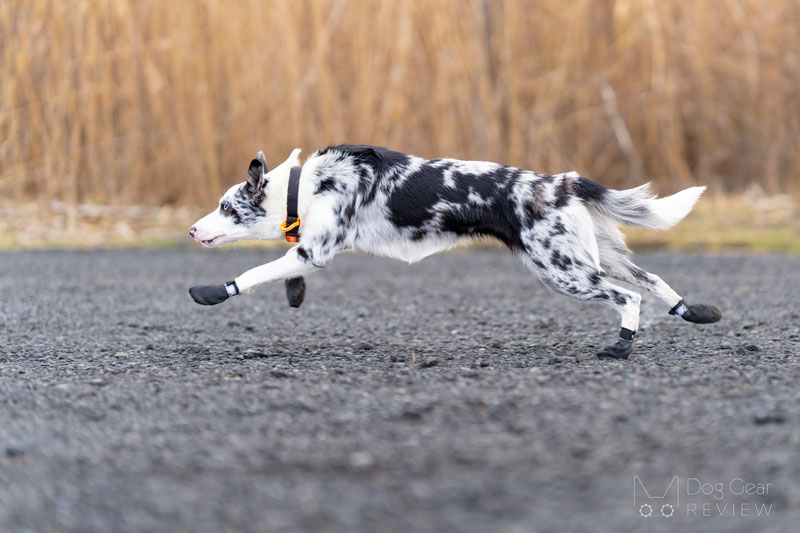There is a strong pushback against using collars, while most people don’t know about the risks of using a poorly fitted/sized harness. Many seem to think that any Y-harness is safe for dogs, which is not true - especially if the goal is to use it for pulling sports. The unpopular truth is that a poorly fitting or designed harness can cause the same health problems or injuries as a dog pulling in a collar or while wearing a cross-shoulder harness.
Finding a good fit can be challenging, and there are many ways the straps can restrict the movement or change the natural posture/gait of the dog, and cause rubbing/chafing. An uncomfortable, restricting fit can lead to joint or spine issues over time, and a harness putting pressure on the lower neck or the belly area can cause serious damage quickly.
You want to ensure the harness is comfortable all around so your dog can freely enjoy your time outside.
Let’s look into all the aspects of the harness fit so you can decide for yourself if a harness fits your dog well!
How Should a Dog Harness Fit?
We have a detailed article on Y-harness fitting with photo examples that you can read for more details so I will only focus on the main items here and then talk about pulling harnesses.
I marked an ideal harness fit on the photos below, but to be honest, we rarely tested a harness so far that was a perfect fit in every aspect. We talk about each of these sections more in the above-mentioned article, but the main points are:
Shoulders: I marked the approximate position of the shoulder joints in the photos below with the red Xs. If your dog pulls or lunges on the leash, you don’t want the neck-straps covering this section and also want to be sure the harness is padded enough to make this activity comfortable.
Chest Bone: the chest bone is the spikey bone you can easily feel on the dog’s chest. You want the middle of the connection of the “Y” on the harness’s front to be ON this bone.
Armpits: leaving room behind the front legs allows the dog to move their legs freely while you also don’t want the straps to be too far back, putting pressure on soft tissue. For running, it can be positioned a bit farther back than marked on the image.
Between the Front Legs: for narrow dogs, make sure that the chest piece isn’t too wide between the front legs and is not chafing the inside of the front legs.

A Y-front leaving the shoulders free.
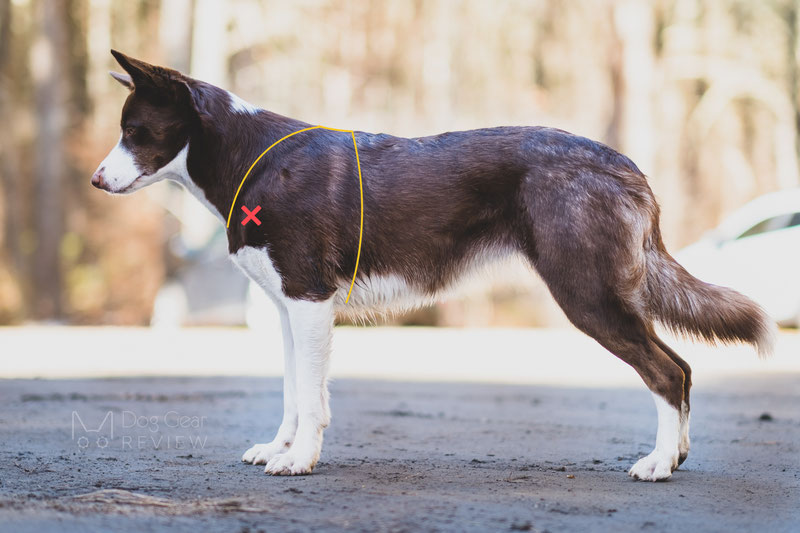
The chest strap leaves at least 3-4 finger room behind the armpits (can be a bit more for running).
Short vs. Long Pulling Harnesses
Short or half harnesses are similar to the common Y-harnesses that many use for everyday walks with the addition of extra padding on the straps, while a long harness is an umbrella term for all harnesses that and a the base of the tail or behind the dog and are designed for pulling.
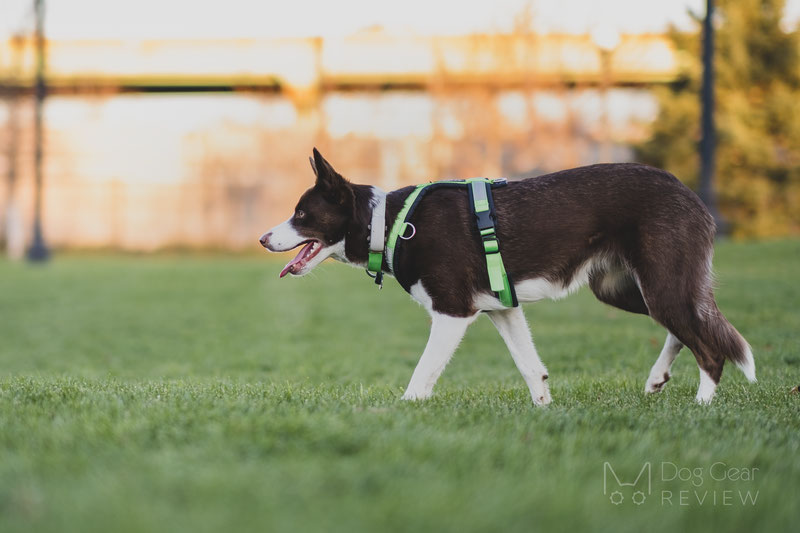
A short harness (CTC Shoulder Harness)
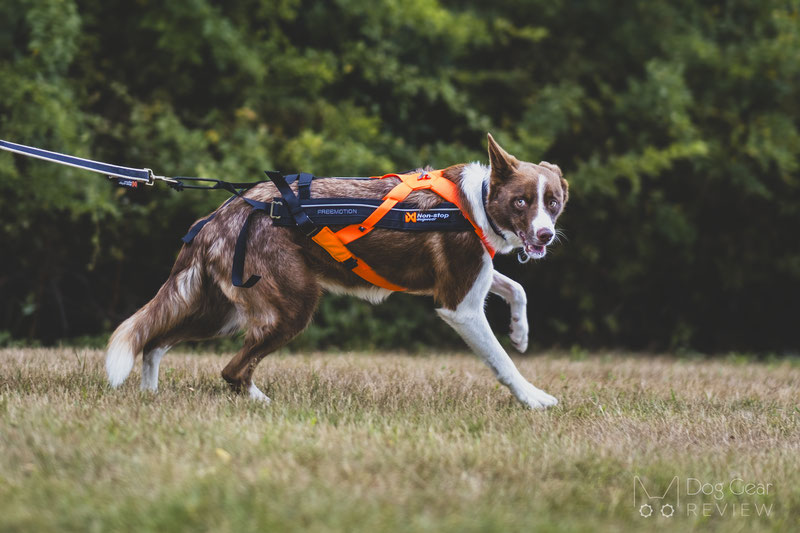
A long harness (Non-stop Dogwear Freemotion 5.0)
The fit of a long-pulling harness follows the general guidelines of harness fitting but while we can accept an incorrect fit in some areas when a harness is only used for regular walks, each of these aspects is crucial when it comes to pulling sports because there is a lot more pressure on the harness.
Why is a long harness better for pulling than a short harness?
Some harnesses have the leash attachment point close to the neck which allows for great steering power in busy areas when walking the dog and this design helps to maintain control over the dog. However, when there is leash pressure, the harness will slide up/rotate upward and behave like a loose collar putting pressure on the lower neck.

As you put the leash attachment point farther back on the dog, you will keep losing steering power/ control over the dog’s head, but the pressure distribution will fall more and more purely on the chest and the harness will stop rotating which is what we want if the dog is pulling during runs. Short/Half/Y-harnesses with an attachment point on the middle of the back are popular because they provide a reasonable middle ground: most of the pressure is on the dog’s chest while we can still maintain control over them.
Long harnesses where the leash attachment point is at the base of the tail or even behind the dog in case of a lower pulling point (e.g. sled) provide the best weight distribution on the dog’s chest. The con of this setup is that you would have a tough time controlling the dog in a busy environment, and if they suddenly stop, the harness can slide up on their back, and in some cases, they can back out from the harness if they get scared or overstimulated (for example at the start).
What makes it hard to determine the fit of long harnesses is that they usually bunch up or are too loose when there is no leash pressure. There is no good way to check the fit of a long harness without seeing it in action while someone can take photos from the side.

Musher Takotna Harness bunching up and sitting in the armpits with no leash pressure
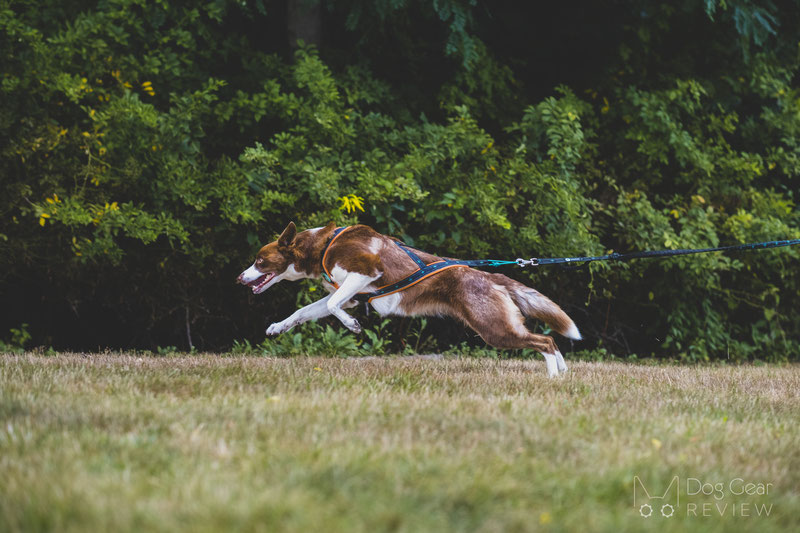
Same harness fitting correctly when pulling
An example of a slightly big long harness falling too low on the shoulders and the chest straps sliding behind the rib cage even with minimal pressure.
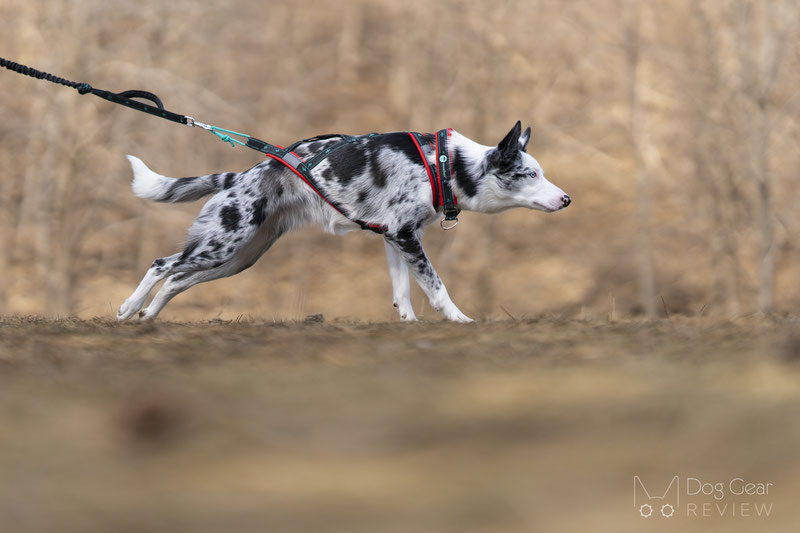
When does my dog need a long harness for canicross/bikejoring?
Long harnesses are beneficial for dogs who pull strongly and consistently. Short (Y) harnesses are perfect while the dog is learning as they give better control and they are usually less likely to back out from it. Many dogs are also gear-shy and wearing a long harness with a big coverage can stress them out which will not help in building drive and motivation.
Many dogs never need to switch to a long harness as they don’t pull that strongly or you might prefer a dog running next to you instead of pulling in the first place. A good indication that an upgrade is necessary is when you hear their breathing is restricted by the front section when they lean into the harness. Some breeds tend to pull with a very low head position so they will reach this point faster than the ones who keep their heads more level with their body.

Best harness to run with a dog next to you?
We receive many questions from people who want to discourage pulling and just want the dog to run calmly next to them. We generally discourage using no-pull harnesses over a long period as most of them will need to sit in the armpits, drag the legs out to the side while rotating the dog towards you, and/or put pressure on the soft tissue to achieve the no-pull effect.
No-pull harnesses can be great tools when paired with consistent training and one should be able to phase it out in a few weeks. However, if you have a strong, driven dog who loves running, they will probably pull just the same way on a no-pull attachment as well even if it is uncomfortable/painful for them so the tool itself will not teach them to stop that in a high arousal state.
As we are a product review website, I do not want to venture into training and behavior topics, but it’s important to highlight that running should be a safe activity for both the dog and the owner and while some no-pull harnesses can be integrated into teaching a loose-leash running, the dog should not be exercising with constant leash pressure on a no-pull ring, with a harness going across the shoulders, or a strap cutting into the armpits.
Using a well-fitting Y-harness and tiring out the dog before the run might be safer and more enjoyable than starting with an excited and energized dog on a no-pull harness.
Best Harnesses for Running with a Dog
Here are a few of our previous reviews of harnesses specifically for pulling:
- Short harnesses:
- Non-stop Dogwear Line 5.0 Harness
- Musher Freespirit Harness
- CTCT Shoulder Harness
- Vagus Sport Harness
- Non-stop Dogwear Rock Harness Long: This is a three-strap harness that can also be used for light (!) pulling.
- Long harnesses:
Summary
A harness is only as good as its fit on the dog in front of us. There is no such thing as XY harness is the best for all dogs. Just because a harness fits one dog perfectly, it might be a terrible fit on another one. For this reason, it is crucial to understand what to look for to determine a safe and comfortable fit and to know the risks of using an ill-fitting harness.
